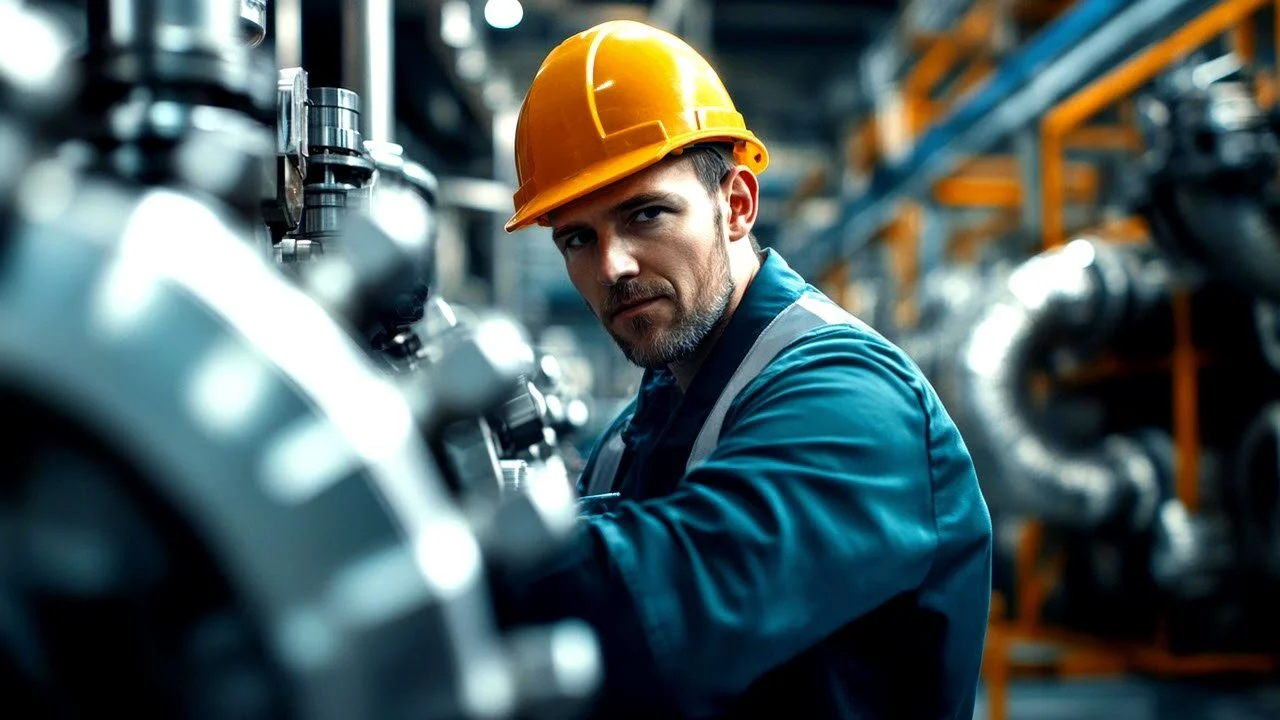AI-Powered AMRs Transform Workplace Safety
Risk and Hazards
Near-miss incidents are more than just close calls—they're insights into hidden risks in your facility. Discover how AI-powered Autonomous Mobile Robots (AMRs) can turn those risks into opportunities for smarter, safer operations. This article outlines the next steps in implementing AMRs that protect workers while boosting productivity.
We've all experienced that gut-wrenching moment when a safety near miss happens on the floor. For me, it happened on a busy Thursday afternoon when our most careful, experienced operator nearly collided with a visitor who took an unexpected turn down an active aisle. It’s the kind of event that freezes you in place—someone nearly injured, a costly mistake barely avoided, and the uneasy realization that next time, luck might not be on your side.
When I first saw an employee step right into the path of a tow tractor, I knew a safety poster or another round of training wouldn’t cut it. We needed a real solution—one that didn’t rely solely on human vigilance. That's when I started looking seriously at the role of Artificial Intelligence in workplace safety, specifically through the lens of Autonomous Mobile Robots (AMRs). My initial skepticism about "robots in the warehouse" disappeared when I realized we weren't replacing human judgment—we were giving our people better tools to succeed. My thesis? AI isn't just changing how we work; it’s reshaping how we keep people safe while doing it.
“Every near miss is a warning—and a gift. It’s an invitation to build a safer system before fate makes the decision for you.”
1. The AMR Advantage
Smart Safety in Motion
I remember watching our maintenance team scratch their heads when our old AGV got stuck because someone moved a pallet six inches into its predetermined path. That's when I realized we needed something smarter—technology that could think through problems rather than just follow instructions. These systems use multiple sensors and processing capabilities to build detailed pictures of their operating environment, allowing them to navigate around obstacles and people more intelligently than traditional automation. Their continuous environmental monitoring allows them to detect and respond to changing conditions more consistently than systems that rely solely on human observation. This is safety at the speed of technology.
2. Turning Near Misses into Learning Moments
When Data Drives Safer Decisions
What struck me during our pilot was how the AMR's behavior evolved over just a few weeks. Areas where it initially moved cautiously became smoother navigation zones as it learned our facility's patterns and rhythms. This adaptive learning enables the entire AMR fleet to improve over time, sharing insights and adjusting protocols to minimize repeat risks. For facilities plagued by repeat near misses, this is revolutionary. It’s a shift from reactive incident management to proactive hazard prevention, turning every event into a learning opportunity.
3. Boosting Safety While Enhancing Efficiency
Profitability and Protection Go Hand in Hand
Here's what surprised me most—and what finally convinced our CFO—the same intelligence that prevents accidents also eliminates the productivity losses we'd accepted as normal. By automating high-risk, repetitive tasks, AMRs can help reduce incident rates while improving operational flow, though the specific benefits will vary significantly based on your facility layout, traffic patterns, and existing safety protocols. Integrated with IIoT platforms, these robots help identify bottlenecks, optimize traffic flow, and provide real-time operational data. This dual benefit — safer workplaces and higher productivity — creates compelling business value, although success requires realistic expectations, proper planning, and a commitment to ongoing optimization.
Actions Today
Develop a Safety-First Vendor Scoring Matrix:
When evaluating vendors, I learned to ask for specific examples of how their systems handle edge cases—those unusual situations that happen just often enough to cause problems. The vendors with the best answers were the ones with real-world deployment experience. This ensures you don’t sacrifice safety for speed or cost.Map Your Facility's Risk Hotspots:
Map Your Facility's Risk Hotspots: Start by walking your facility with a fresh perspective, noting every spot where you instinctively slow down or look twice. Those instincts often point to areas where technology could provide the most value. Use this data to tailor your AMR demo scenarios and ensure the technology is tested under real-world conditions.Engage Cross-Functional Teams Early:
The most valuable insights during our vendor evaluations came from our floor supervisors and machine operators—they knew exactly which scenarios would make or break the technology in our environment.Set Clear SLAs with Vendors:
I learned to ask vendors about their worst-case support scenarios and how they handle them. Their answers revealed more about their capabilities than any polished demonstration could.
Conclusion
Near misses in the workplace aren’t just warnings—they're opportunities for improvement if we’re smart enough to act on them. AI-powered AMRs offer a practical path forward for facilities ready to invest in both the technology and the organizational changes needed to maximize its value.
As leaders, it’s our responsibility to turn fleeting moments of danger into lasting strategies for safety and growth. By implementing thoughtful vendor selection, building strong partnerships, and demanding rigorous testing, we can ensure that technology works for us—not the other way around.
Description:
Discover how AI-powered AMRs are revolutionizing workplace safety by transforming near misses into proactive safety strategies. Discover how to select the right vendors, structure compelling demos, and integrate smart automation for safer and more efficient operations.
#WorkplaceSafety #ArtificialIntelligence #AMR #BusinessGrowth #Innovation #OperationalExcellence #RiskManagement #SmartAutomation #Industry40 #ManufacturingSafety


